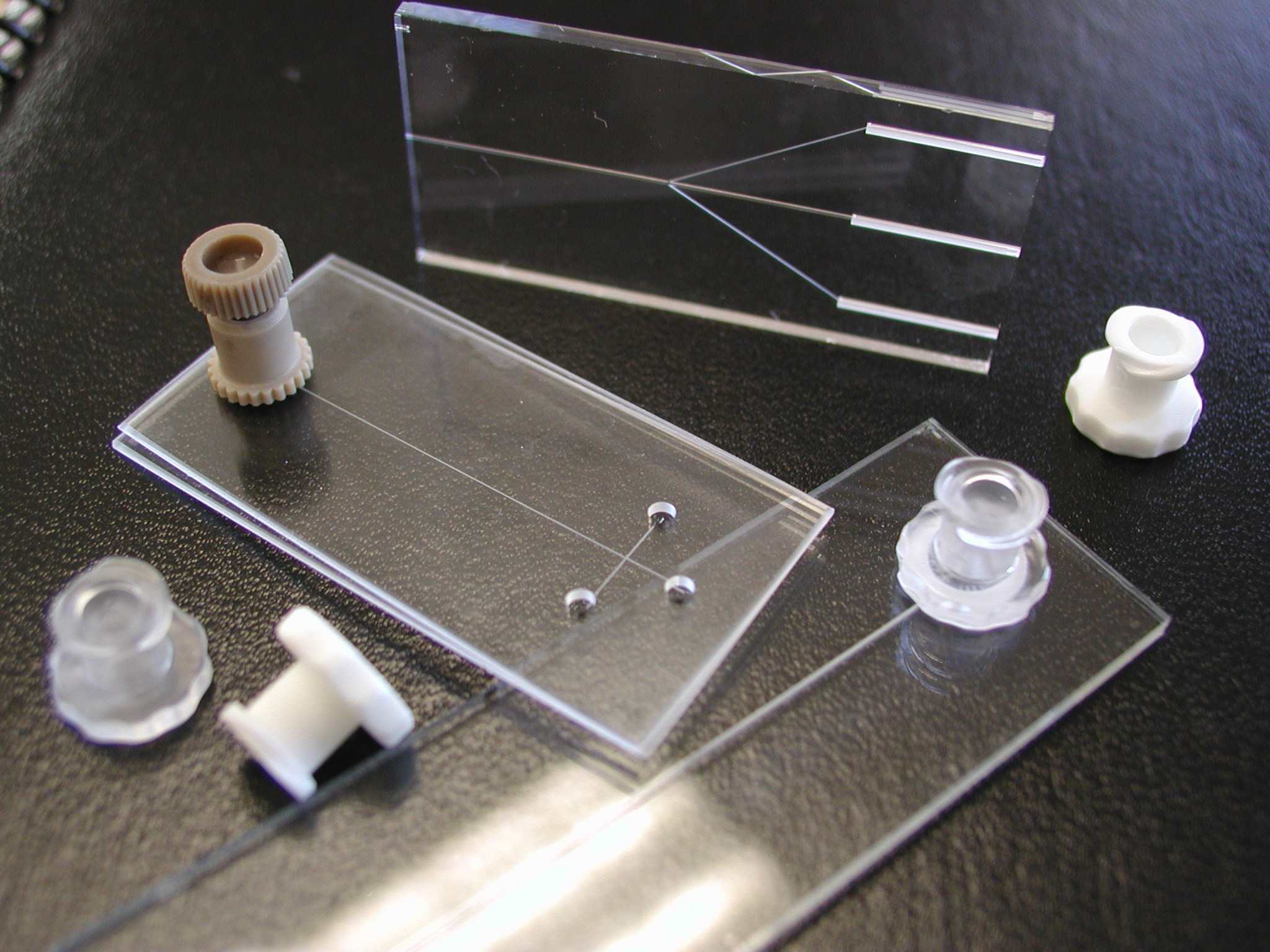
Dr. Ali Said, Foundry Director
Translume has the ability to fabricate microfluidic channels of almost any shape and size that you can envision.
Fused Silica Material Properties
Translume works with Fused Silica. This glass is composed exclusively of high-purity amorphous silica (SiO2).
At the request of some of our customers, and on a custom basis, we now offer microfluidic chips and flow cells equipped with Luer connectors made out of metal.
What is unique about our custom microfluidic?

Material:
All of our microfluidic chips and flow cells are made of fused silica, the highest purity glass available.
Fused silica glass:
- Transparent from the deep ultraviolet through the near-infrared
- Lowest auto-fluorescence of any glass. Fused silica is clearly the best material for fluorescence studies, as its auto-fluorescence is orders of magnitude weaker than that of all other glasses and polymers.
- Compatible with all liquids (except for HF, and hot KOH).
Microfluidic Geometry:
Translume's standard glass chips have microfluidic channels with nearly perfect rectangular (or square) cross-sections. However we can fabricate microfluidic channels with any arbitrary shape if you so desire.
Additionally, we have the expertise to:
- Fabricate microfluidic channels that are tapered (tapered width and/or tapered depth).
- Integrate flow restrictions and/or nozzles, including 3D nozzles, in microfluidic channels
Substrate Geometry:
Our standard chips are 2” long x 1” wide. However we can provide chips of any size, from the very small (just a few millimeters squared) up to 4” x 4”. The overall shape does not have to be rectangular – we often fabricate chips that have a rounded geometry.
Our standard microfluidic chips are made of 2 fused silica glass layers, and our standard flow cells are made of 3 fused silica glass layers; but we can work with up to 8 layers if your design requires it.
Optical Quality:
Except if specified otherwise our microfluidic chips have an optical polish on both external faces. The microfluidic channel(s) have an optically clear (transparent) ceiling and a translucent floor. You can visually monitor the microfluidic flow from both sides, but the image quality will be significantly better from the side that is transparent. If you prefer to have both microfluidic channel sides (floor and ceiling) to be transparent, indicate in your request that you need a flow cell.
Contact us to discuss your requirements.
We offer on a standard basis two types of connectors - Luer and Nanoport- and we are often asked how they compare.
What is the difference between fused quartz and fused silica? Confused? Well, you are not alone - This is one of the most frequently asked questions by our customers.
